Architect: Jim Engh
Walkable: Yes, but the back nine is a brute
Highlighted holes: 2, 5, 6, 11, 12, 13, 14
*This post began with a long breakdown of the Jim Engh style of architecture. Two paragraphs into that I decided that if I was going to stick to this as a post about Four Mile Ranch, I should make my thoughts on Engh its own post. You can expect that eventually.
Of Engh’s courses that I’ve played (4MR, Fossil Trace, and Awarii Dunes), Four Mile easily has the most tee shots that test your willingness to throw your ball up into the sky and trust that something in the distance will catch it. Combined with a good number of blind approaches and bottleneck fairways, position is everything.
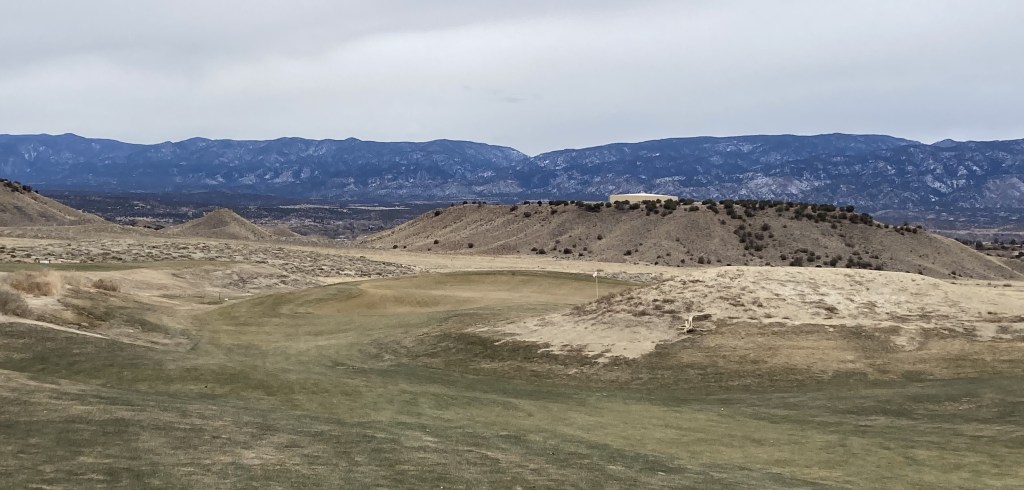
While less dramatic than the back, the terrain on the front eases you into Cañon (pronounced canyon) City’s pseudo-desert landscape. You’ll be introduced to iron crunching caliche just off the fairways, piney scrubland, and high dunes that line the fairways and surround the greens.
The back nine uses its elevation to the fullest. You start off up the mountain before not one, but two dramatic descents. One of the only faults I can find in the routing is that after all of the excitement leading up to them, the closing holes are a bit of a letdown.
For someone with a signature bunker style, it’s surprising that there are none on the course, but it doesn’t suffer for it in the slightest. Engh makes good use of earth movement to hide sightlines while rewarding the well positioned. Some holes have rocky faces stationed where bunkers might have been to make you think twice about your intended line. Wide landing areas that are more forgiving than they look counteract some of the blind or far back tee shots.

Considering the amount of movement in the course, it’s incredible that, according to Engh, “[it’s] a site so sweet that the only significant excavation occurred at the irrigation pond and part of one par 5… Pretty crazy concepts and spaces created by nature.”
An argument can be made about the “fairness” of the penal greens, but it’s not as if you don’t see where to go and what to avoid. Many of them are elevated or hidden and reject ground game approaches while rewarding aerial shots. I don’t know that I would want to play here everyday, but in that regard it is like ordering an especially rich dessert. Play it every so often and it’s a delicious treat.
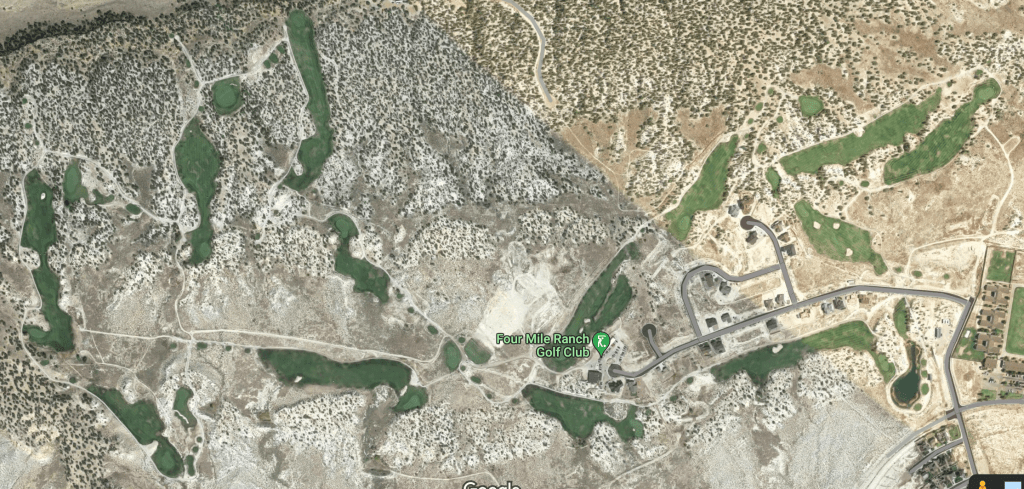
Two: The second hole, a medium length par five, features a hidden greensite. From the tee, it’s hard to tell just where you’re supposed to aim, but if you use the rocky pile on the left side of the fairway as your line, you should be just fine. Your next shot needs to be a lay up to the end of the fairway giving you an open look at the green. Only true believers or well experienced Four Mileites should make an attempt at the green in two.
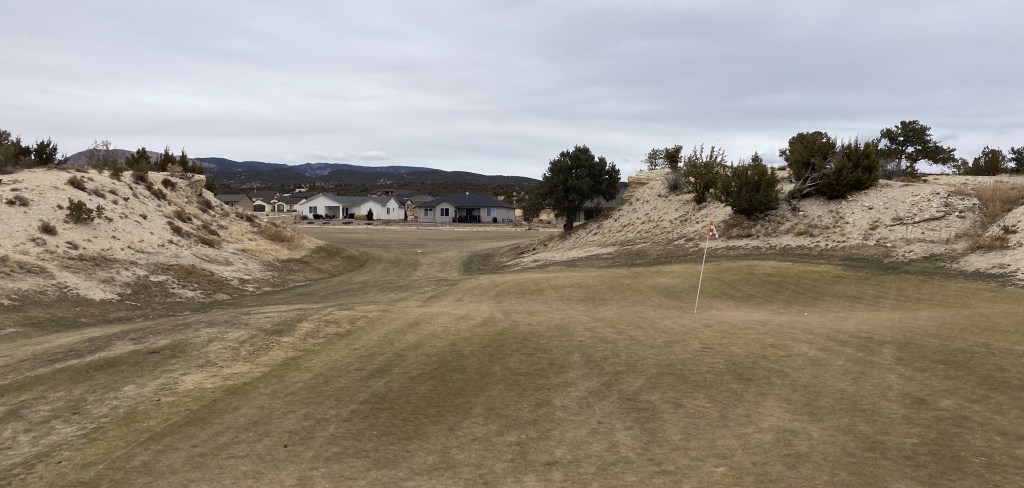
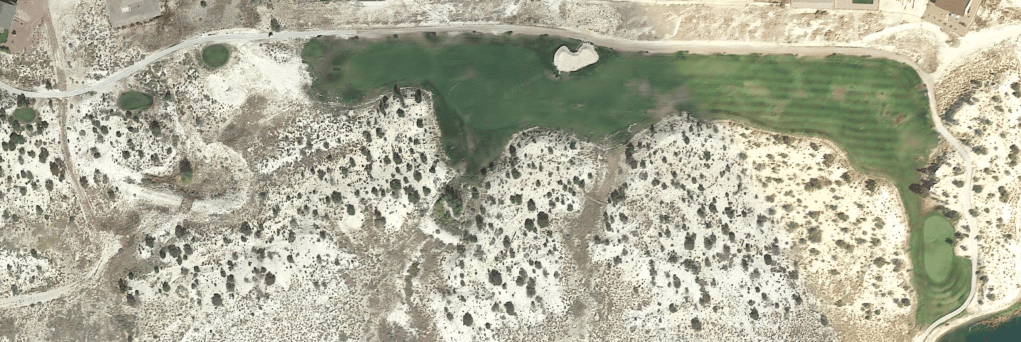
Five: The fifth is perhaps the most traditional looking hole on the course from above, but from the tee, the large undulations prevent any view of the green. They look like the kinds of moraines you might see at someplace like White Bear Yacht Club. Play your teeshot as close to the left as you can and it will roll down to the right for an open approach.
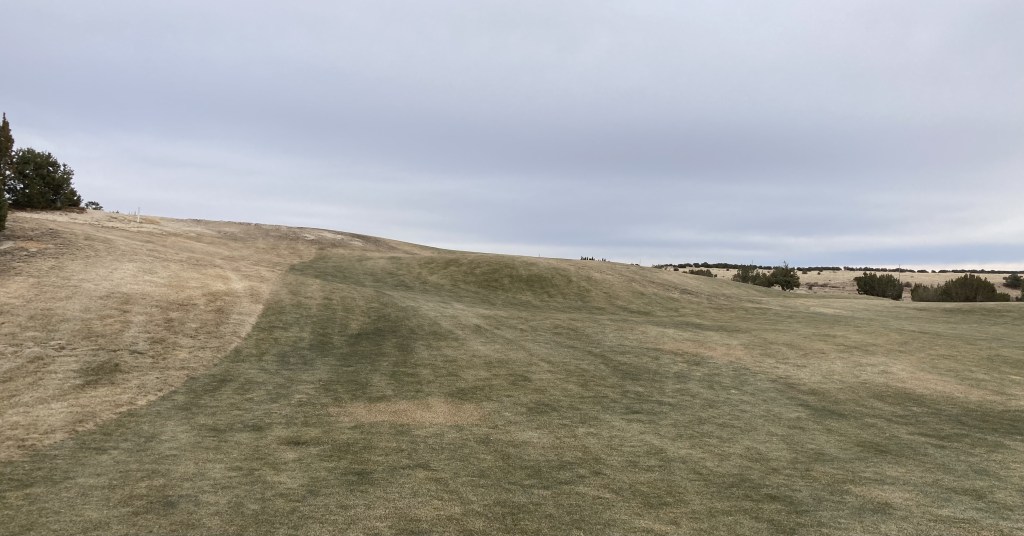

Six: Keeping with the blindness theme, this par five looks like it should be straightforward, and it is! (until you get to the end). You won’t see the green until you walk up the dune in front to find where your ball ended up. Play to a comfortable yardage and trust, once again, that there is a green over yonder. The forgiving greensides, and bell on your way off to signal the green is clear, will keep you safe.



Eleven: You can’t have dramatic downhill tee shots without first making your way up the mountain. The eleventh is another hole that takes a hard turn to the green. Fortunately, there is a forgiving landing area and no need to worry about getting to the green in two. If the approach wasn’t enough, the green sits on a high, well-guarded mound.
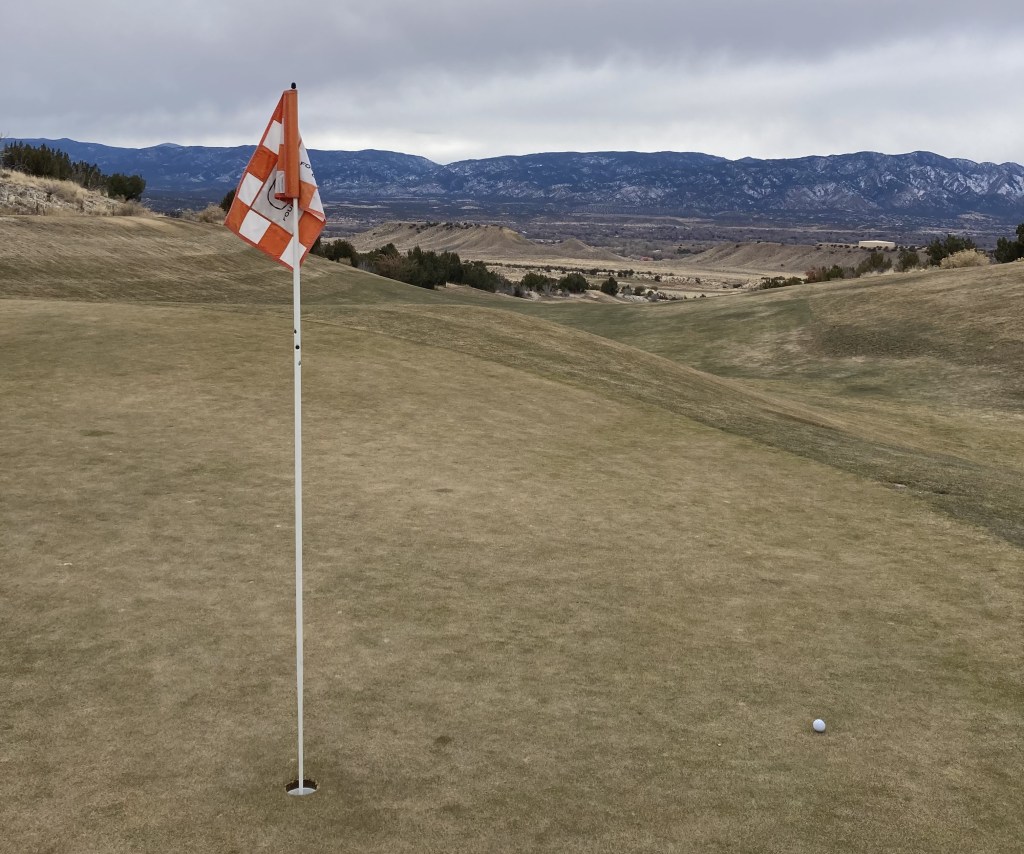
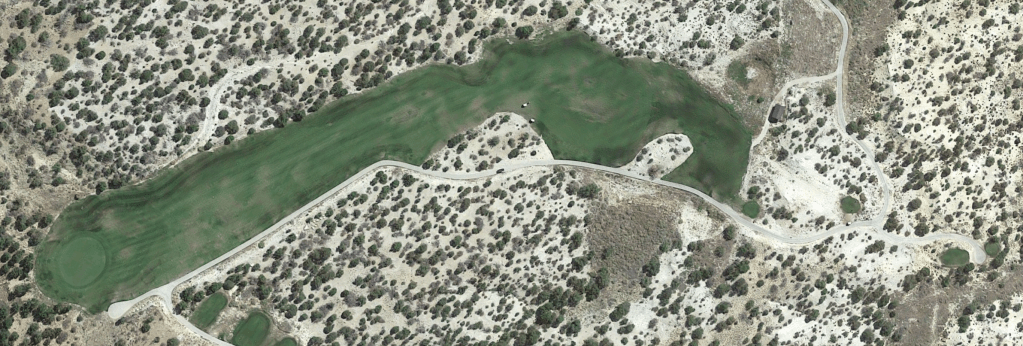
Twelve: A rocky face obscures the right side of the green on this vertical biarritz and a pin on that side creates an especially intimidating shot. If you find yourself out of position, you face a three putt, or worse.


Thirteen: It’s all downhill from here, beginning on the long par four thirteenth. If it’s any comfort, the landing area is much more forgiving than it looks from the tee. From there, the fairway bottlenecks to a small green that is unforgiving to approaches left short.
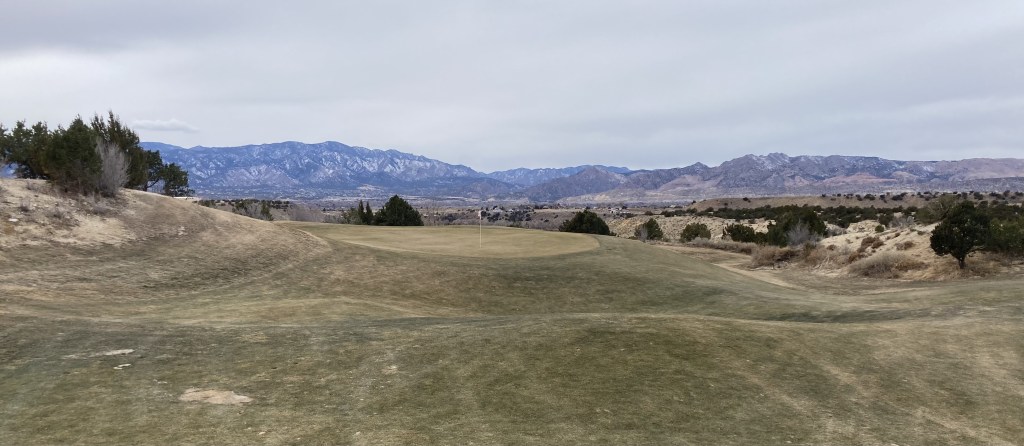

Fourteen: The fourteenth is another par three, and another green with a blind approach. This two hundred plus yard par three echoes the approach to six with a white post to aim at and a forgiving greensite that funnels your ball to the middle. There is a charming flag to raise when you’re on the green and a bell to ring when you’re off.
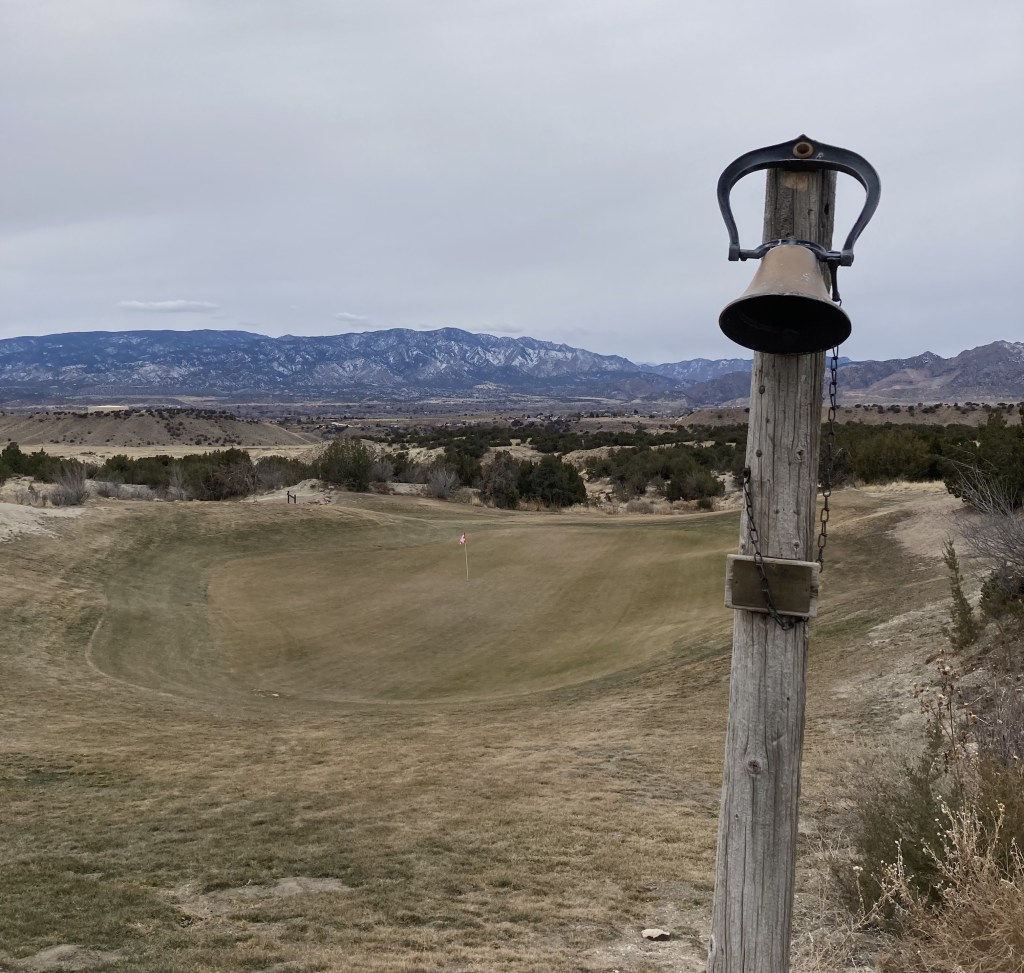

Final thoughts: Four Mile Ranch is a delight to play and the lack of bunkers moderates some of Engh’s more radical impulses. The dramatic landforms create 18 unique and interesting holes, nary a bad one in the bunch. While it’s technically walkable, no one will fault you if you decide to take a cart and enjoy the ride.
Further reading:
Golf Club Atlas – Four Mile Ranch – Engh’s Evolution in Design …
Golf Club Atlas – Four Mile Ranch Golf Course (Canon City, CO) Photo Tour All holes
Top 100 Golf Courses – Four Mile Ranch
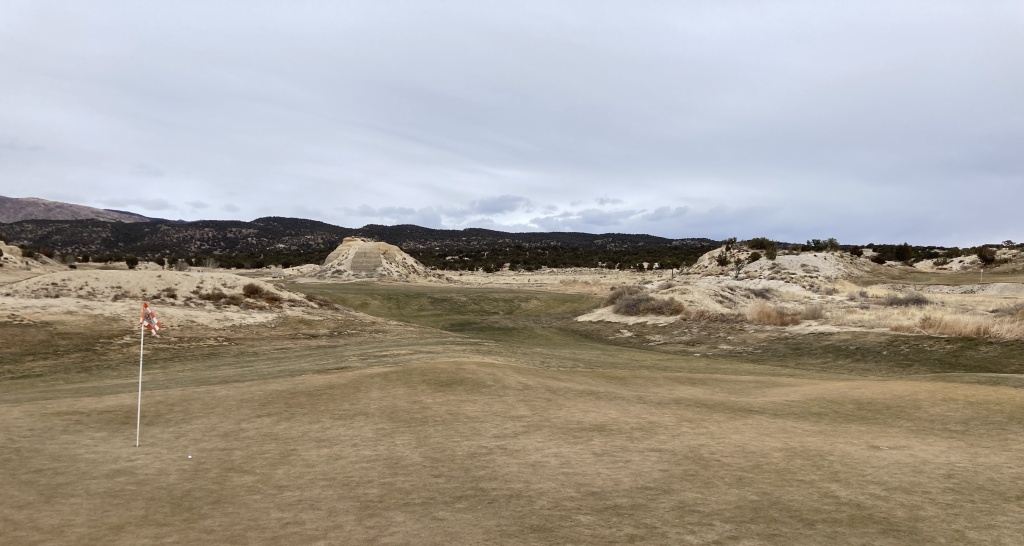
Leave a comment